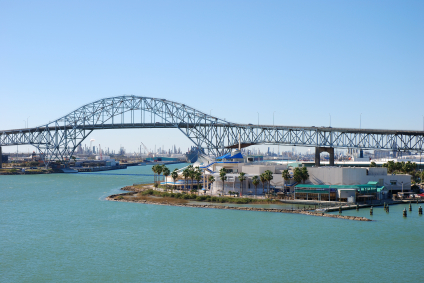To mark the start of the 2009 hurricane season on Monday, Texas A&M University researchers released a new study projecting that rising seas and stronger hurricanes caused by global warming will considerably increase flooding damage from such storms in the Corpus Christi area.
Warnings about the Texas coastal impacts of sea-level rise accompanying manmade climate change are nothing new, but the A&M study provided a particularly localized and detailed focus.

Texas State Aquarium at Corpus Christi
“Flooding and damage from major hurricanes will be more severe,” said Jennifer Irish, the study’s lead author. “And the worse global warming gets, the more severe the consequences for the Texas coast.”
Irish is an assistant professor in the Coastal and Ocean Engineering Division of A&M’s Zachry Department of Civil Engineering. The study’s sponsor was the Washington-based National Commission on Energy Policy.
In making their calculations, the A&M researchers used projections by the Intergovernmental Panel on Climate Change related to expected sea-level rise and hurricane intensity. The IPCC bases its projections on future scenarios with different levels of worldwide emissions of heat-trapping greenhouse gases.
An announcement about the study issued by the commission listed these key findings:
- Sea level in the Corpus Christi area is projected to rise by about 2.6 feet by the 2080s under a high-emissions scenario that does not include the potential for still higher seas because of increased ice-sheet melting. “This would come on top of the 1.7 feet of sea-level rise already experienced over the past 100 years in this area. Higher sea level means higher flood levels. It also affects the barrier islands, reducing the protection they provide.”
- “Hurricanes are projected to become more intense as ocean waters continue to warm. In particular, models project increases in wind speeds and rainfall rates for the strongest hurricanes. Intensity (measured by the fall in central pressure) is projected to increase by about 8 percent for every 1.8ºF (1ºC) increase in sea surface temperature.”
- “By the 2030s, hurricane flood levels could increase by 3 to 27 percent, depending on emissions scenario. By the 2080s, hurricane flood levels could increase by more than 100 percent.”
- “Structural damage to homes and buildings affected by flooding due to a major hurricane is projected to rise by 60 to 100 percent by the 2030s and by more than 250 percent by the 2080s.”
- If a storm surge comparable to Hurricane Carla’s in 1961 were to occur in the Corpus Christi area, structural damage would increase by a projected $100 million to $250 million by the 2030s, depending on the emissions scenario. By the 2080s, property damage would increase by $250 million to more than $1 billion. “The higher the emissions scenario, the more damage projected.”
Records related to three historical storms – Beulah in 1967, Bret in 1999, and Carla in 1961 – were used to validate a surge-projection model and as a benchmark for comparing future scenarios.
The study looked only at hurricane damage inflicted by projected storm surge and sea-level rise. Various additional factors involved in the study’s design meant its estimates are “most likely low” for future hurricane impacts, the commission said.
The study authors concluded their report’s introduction with this warning: “The potential implications of our findings include an increase in displacement of families and local businesses, a rapid rise in property damages, and long-term economic consequences at both local and national levels following hurricane events.”
– Bill Dawson
